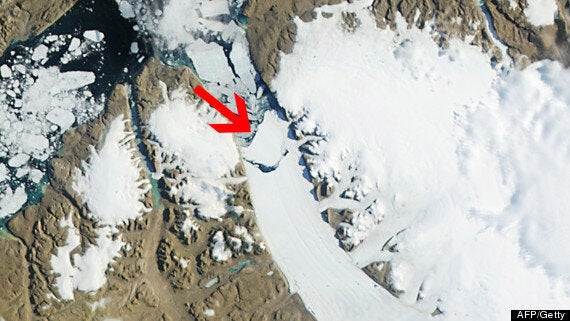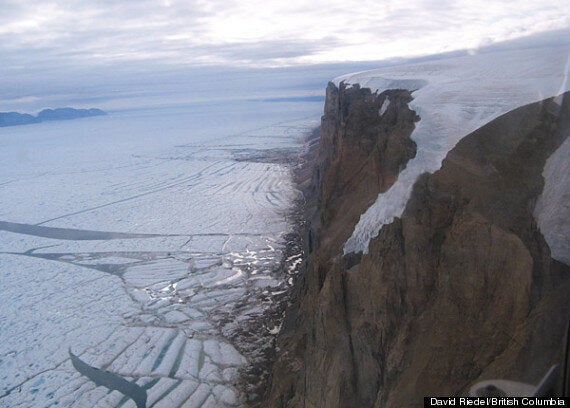As icebergs go, this is a whopper.
A 46 square-mile (120 square km) chunk of ice broke away from Greenland’s Petermann Glacier on Monday.
If you can’t picture it, it’s double the size of Manhattan.

The iceberg broke away on Monday and is a staggering 46-square-miles in size
The glacier is one of the two largest left in Greenland and this is the second massive iceberg to form from it in recent years, raising fears that global warming is having a devastating effect on the Arctic region.
In 2010 a “calving” - the term used for ice breaking away from glaciers - saw a chunk twice as big as the latest one being set loose, according to researchers at the University of Delaware and the Canadian Ice Service, who spotted the formation of both icebergs.
Lead researcher Andreas Muenchow, from the University of Delaware, said: “While the size is not as spectacular as it was in 2010, the fact that it follows so closely to the 2010 event brings the glacier’s terminus to a location where it has not been for at least 150 years.

The vast flat expanse stretching into the background is Petermann Glacier, well over one-third of which has now broken off
“The Greenland ice sheet as a whole is shrinking, melting and reducing in size as the result of globally changing air and ocean temperatures and associated changes in circulation patterns in both the ocean and atmosphere.”
Muenchow points out that the air around northern Greenland and Ellesmere Island has warmed by about 0.11 degrees Celsius per year since 1987.
Researchers from the GFZ German Research Centre for Geosciences, meanwhile, report that the Greenland ice sheet continues to lose mass and thus contributes about 0.7 millimetres per year to the currently observed sea level change of about 3mm per year.
This trend increases each year by a further 0.07 millimetres per year, they say.
According to Muenchow, this newest ice island will follow the path of the 2010 ice island, providing a slow-moving floating taxi for polar bears, seals and other marine life until it enters Nares Strait, the deep channel between northern Greenland and Canada, where it likely will get broken up.
“This is definitely déjà vu,” Muenchow said. “The first large pieces of the 2010 calving arrived last summer on the shores of Newfoundland, but there are still many large pieces scattered all along eastern Canada from Lancaster Sound in the high Arctic to Labrador to the south.”
Prior to 2010, the last time such a sizable ice island was born in the region was 50 years ago. In 1962, the Ward Hunt Ice Shelf, on the northern coast of Ellesmere Island in Nunavut, Canada, calved a 230-square-mile island.